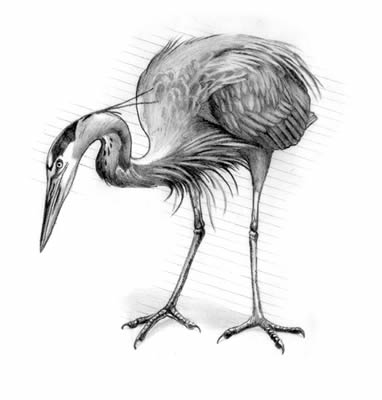

Even children watching this great bird with its slow wing beat, neck folded on its back, and long legs streaming behind, think they’ve seen an amazing sight—and indeed they have. The great blue heron (Ardea herodias), sometimes called a crane, can measure 4 or 5 feet from head to tail, with a nearly 6-foot wingspan. This fairly common slate-blue wading bird with the black crest patiently stalks its prey in the wetlands of Holland Island, standing motionless for many moments before striking with lightning speed to spear a fish with its long beak. The fish is then swallowed head first. A big fish on the banks with holes poked in its side may be a sign that the heron literally bit off more than it could swallow.
Read and add comments about this page